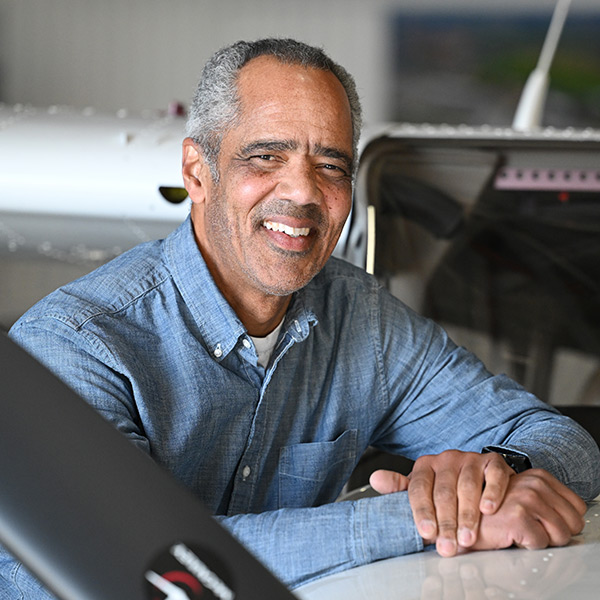Safety reset
HondaJet proficiency program

While the frequency of incidents has attracted the attention of critics who use words like “hot rod” and “handful” to describe the high-performance light jet, HondaJet owners and pilots have also taken note of the accidents and identified several pilot errors, which, they say, form the root of the problem.
Some of the mistakes can be traced to techniques pilots learned while training for their private pilot certificates in light piston trainers. Private pilots are familiar with the practice of adding speed to the approach during gusty conditions, timing the flare just right, and holding the nosewheel off after the main wheels touch down. In a HondaJet, though, those are techniques to avoid, according to David DeCurtis, chair of safety for the HondaJet Owners and Pilots Association (HJOPA).
“Adding half the gust to VREF is absolutely the wrong thing to do in a HondaJet,” DeCurtis said, adding that the aircraft was designed to handle adverse wind and weather conditions—short of wind shear—at its prescribed landing speed, so pilots must trust the techniques taught during type training and forget about trying to ‘grease’ the landing.
“Your target is VREF, period, end of story.” Rather than adding a margin of safety with extra speed during gusty landings, “You are adding a margin of risk,” he said.
To help other pilots, HJOPA has developed the HJOPA Proficient Pilot Program, which it planned to launch in May. The program emphasizes training and highlights the differences in characteristics pilots can expect when flying the HondaJet. The program’s launch was to include its first instructional video, which focuses on details of the HondaJet’s landing procedure with footage from several landings in simulators at a range of airports.
Procedures that pilots might consider departures from the norm include minimizing the flare and seeking to plant the wheels firmly on the runway, generating up to 1.5 Gs on touchdown. This creates the prescribed “full landing gear compression” that DeCurtis said is desirable because it maximizes friction between the tires and the pavement, thus maximizing directional control. “Friction is dramatically more efficient in directional control than your rudder,” he said.

The video will also advise against using a sideslip on approach in crosswind conditions, recommending instead a crab-and-kick technique to compensate for crosswind. DeCurtis suggests maintaining the crab all the way to touchdown, timing the rudder input to align the nose with the centerline to the last possible instant. A sideslip (banking into the wind with ailerons while countering the turn with opposite rudder) risks wing tip contact with the runway.
The prompt lowering of the nosewheel to the runway at touchdown, which Honda calls “prompt de-rotation” in its flight manual, is another departure from the way many pilots are accustomed to landing. Getting the nosewheel down quickly, though, increases the pilot’s control on the ground. The goal when landing the HondaJet is a rapid and firm transition from flying to taxiing. It might help to think of an F/A–18 landing on an aircraft carrier, with its gear struts absorbing the impact.
DeCurtis acknowledges the parallels between Honda’s landing techniques and the Navy’s but said the HondaJet version is comfortable for passengers. He said the aircraft “lands beautifully when you use the technique,” which also happens to be easier than other typical landing practices. DeCurtis refers to landing the HondaJet as “the art of doing nothing.”
It is no surprise that many pilots have resisted the pressure to adopt the HJOPA techniques, preferring to stick with methods they have used successfully in other aircraft. Arthur Wolk, a HondaJet owner who left HJOPA following disagreements over how to land the airplane, attributes the string of runway accidents largely to poor speed control during the approach and touchdown.
“What I see is that the approach speeds are too high,” said Wolk, who has been flying for 50 years and has 5,000 hours. His jet experience includes a vintage Grumman F9F Panther. He calls the HJOPA technique “goofy” and believes the prescribed full-compression touchdowns are likely to increase the risk of runway excursions. Wolk recommends flying the HondaJet, essentially, “like any other airplane,” focusing on the all-important stabilized approach.
As if to emphasize that the HondaJet does not differ appreciably from the piston aircraft most private pilots fly, Wolk said, “You still have to fly it all the way to the ramp.”
Almost anyone who has trained in taildraggers has heard the same line. 



